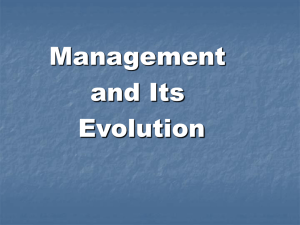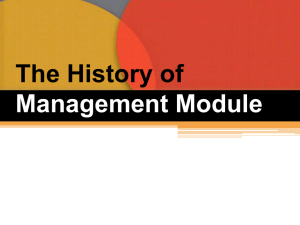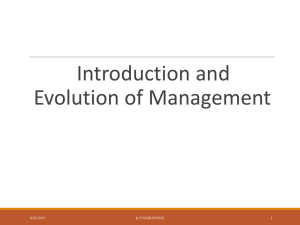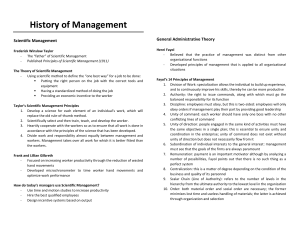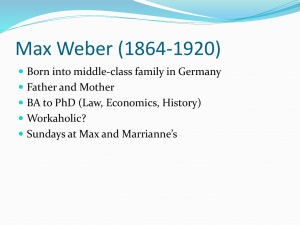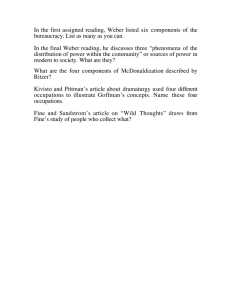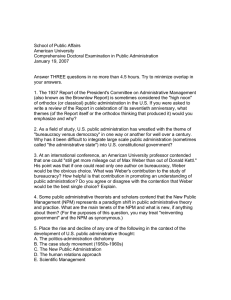Classical Organization Theory: Bureaucracy
advertisement
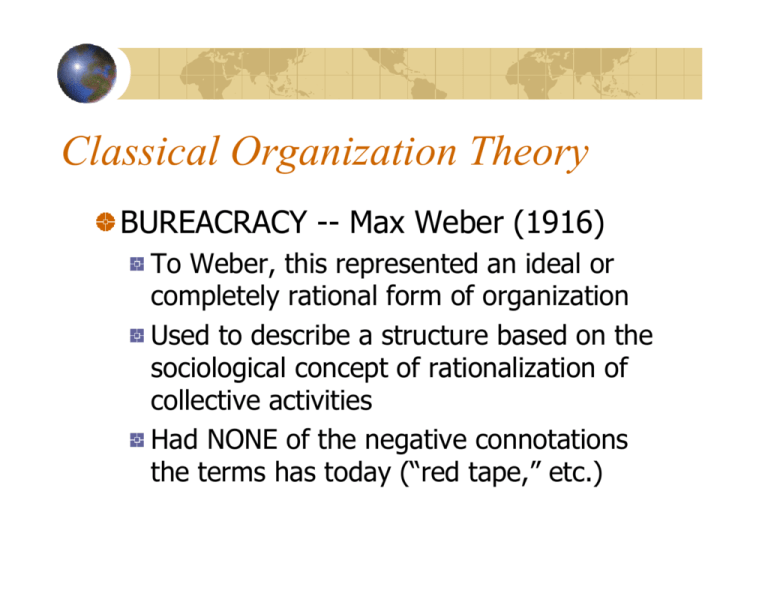
Classical Organization Theory BUREACRACY -- Max Weber (1916) To Weber, this represented an ideal or completely rational form of organization Used to describe a structure based on the sociological concept of rationalization of collective activities Had NONE of the negative connotations the terms has today (“red tape,” etc.) Key Features of Bureaucracy Clear division of labor: each task performed by employees is formally created and recognized as an official duty (yours and no one else’s). Specialization. Hierarchical arrangement of positions: each lower position controlled and supervised by a higher one. Chain of Command Key Features of Bureaucracy Formal rules and regulations: uniformly guide employee behavior. Provide continuity and stability to work environment. Reduce uncertainty about task performance. Impersonal relationships: managers don’t get involved in employees’ personalities and personal preferences. No emotional attachments. Provides for fairness. Key Features of Bureaucracy Employment based entirely on technical competence: get job because you can do the job, not because of who you know. Rigid selection criteria. No arbitrary dismissal or promotion. Fayol’s Fourteen Principles Fayol: French industrialist and general administration theorist Worked at same time as Weber Identified a set of “principles” of management And the principles are………. Division of Labor: Specialization increases output by making employees more efficient Authority: Managers must be able to give orders. Authority and responsibility go together Discipline: Employees must obey and respect the rules of the organization. And the principles are………. Unity of Command: every employee should receive orders from only ONE superior. Unity of Direction: Each group of organizational activities that has the same objective should be directed by one manager using one plan. And the principles are………. Subordination of Individual Interests to the General Interests: the greater good. The organization’s interests come first. Remuneration: workers must be paid a fair wage for their services. Centralization: degree to which subordinates are involved in decision making. What works best for the organization? Centralized: management-driven. Decentralized: subordinate-driven And the principles are………. Scalar chain: line of authority from top management to the lowest ranks. Communications should follow this chain whenever possible. Order: People and materials should be in the right place at the right time. Equity: Managers should be kind and fair to their subordinates And the principles are………. Stability of Tenure of Personnel: High employee turnover is inefficient. Initiative: Employees who are allowed to originate and carry out plans will exert high levels of effort. Esprit de Corps: Promoting team spirit will build harmony and unity within the organization.
